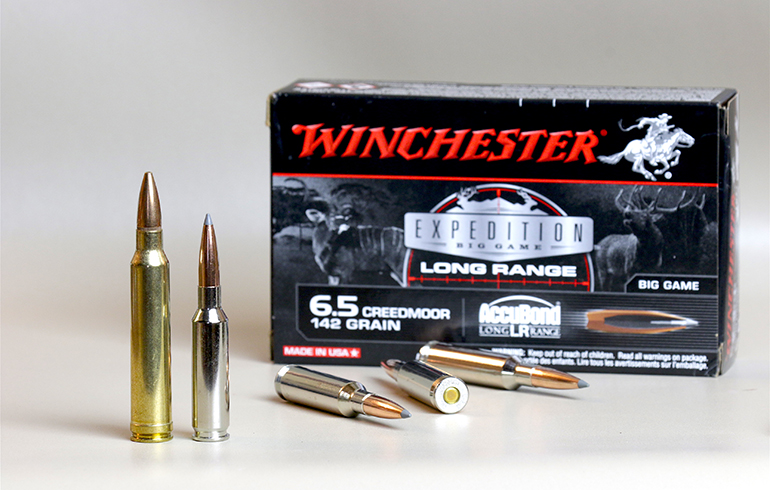Understanding Bullet BC (Ballistic Coefficient)
We hunters love to argue endlessly about calibers, cartridges, bullet weights, and muzzle velocities, but we should be equally concerned with BCs — Ballistic Coefficients.
BC might sound like a bunch of hooey, but it’s really at the heart of bullet performance. With the right BC you can make a light bullet hit with twice the kinetic energy of a bullet twice its weight because doubling a projectile’s velocity quadruples its energy. Doubling its weight only doubles its energy.

BC is a numeric designation for a projectile’s ability to resist air drag. The better it does this, the faster it flies down range, the less it drops, the less it drifts in the wind and the more energy it delivers. BC takes into account bullet weight, diameter and shape or form. The higher the weight, narrower the diameter and sleeker the shape, the higher the BC. High BC bullets look like speed waiting to happen: long, slim, pointy with sloping, tapered boat tails.
To appreciate what BC can do for performance, let’s compare an old 150-grain round-nose .308 bullet from the early 20th century to Winchesters 150-grain Ballistic Silvertip of today. That old round nose probably had a BC rating of about .186. Today’s sleek Silvertip is rated BC .435. Both of these bullets can be loaded atop a 308 Winchester and driven to 2,810 fps, according to Winchester’s catalog. Let’s run these through a ballistic calculator and see what happens. We’ll zero both bullets at 200 yards and shoot in a 10mph, right angle wind. Both bullets are launched at 2,810 fps.
| Bullet | Velocity fps/Drop in Inches/Drift in Inches/Energy in f-p | |||
| 100yds. | 200yds. | 300yds. | 400yds | |
|
150-gr. RN BC .186 |
2322/2.5/2/1796 | 1897/0/8.5/1199 | 1528/12/20/778 | 1237/40/39/510 |
|
150-gr. BST BC .435 |
2595/1.9/1/2243 | 2396/0/3.5/1912 | 2207/8/7.5/1622 | 2026/23/13/1367 |
Those are a lot of numbers to study, but do so and you’ll realize that at 300 yards the higher BC Ballistic Silvertip retains more than twice the energy of the low BC round nose, drops 4 inches less and drifts 12.5 inches less! Those are huge, game missing distances. And all because of the bullet’s shape.
Maybe this is why Winchester no longer loads round nose bullets in 308 Winchester, 30-06 Springfield, 300 WSM, etc.
This same efficiency phenomenon explains how some relatively small, light cartridges can outperform some significantly larger, more powerful rounds at extreme range. Winchester’s hot, accurate, 142-grain AccuBond LR 6.5 Creedmoor loading, for instance, leaves the muzzle at just 2,700 fps. That’s hardly hyper-velocity. The 150-grain Power Point load in 300 Winchester Magnum takes off at 3,290 fps. That’s almost a 600 fps advantage. But the Power Point’s BC is .294 and the AccuBond LR’s BC is .719. Let’s run some numbers and see what happens. Both are zeroed at 200 yards and fired in a 10 mph crosswind.
Don’t forget to check out the Winchester Ballistics Calculator, which uses cutting-edge technology to provide detailed ballistics information for hunting and sport shooting enthusiasts.
| Bullet | Velocity fps/Drop in Inches/Drift in Inches/Energy in f-p | |||
| 300yds. | 400yds. | 500yds. | 800yds | |
|
6.5 Creedmoor 142-gr. ABLR BC .719 |
2336/7.7/5/1721 | 2223/22/8/1558 | 2113/42/13/1408 | 1803/157/35/1025 |
|
300 W.M. 150-gr. PP BC .294 |
2327/6/9/1804 | 2053/19/17/1404 | 1799/40/28/1078 | 1206/183/87/484 |
Those numbers might shock you. The puny little 6.5 Creedmoor delivers more punch than the mighty 300 Winchester Magnum? But physics is physics. Pushing air out of the way sucks a lot of energy out of a bullet. The good news is that the 300 W.M. can redeem itself with a heavier, higher BC bullet, as this next trajectory chart shows. These are the ballistics of Winchester’s 190-grain AccuBond Long Range load zeroed at 200 yards and kicked from the muzzle at 2,875 fps in the same 10 mph crosswind.
| Bullet | Velocity fps/Drop in Inches/Drift in Inches/Energy in f-p | |||
| 300yds. | 400yds. | 500yds. | 800yds | |
|
300 W.M. 190-gr. ABLR BC .640 |
2450/7/5/2532 | 2319/19/9/2269 | 2193/39/13/2029 | 1837/143/36/1424 |
BC matters more and more with distance. Inside of 100 yards, don’t worry about it. Choose your bullets based on things like accuracy and terminal performance. At 200 yards doubling a bullet’s BC can matter. Certainly it will at 300 yards, and beyond that it starts to become truly significant. This is when you want to combine accuracy and terminal performance (expansion) with sleek shape. Fortunately, Winchester combines all of these characteristics in its wide variety of bullets for most of the 67 different cartridges it loads. Options. Lots of great options.




